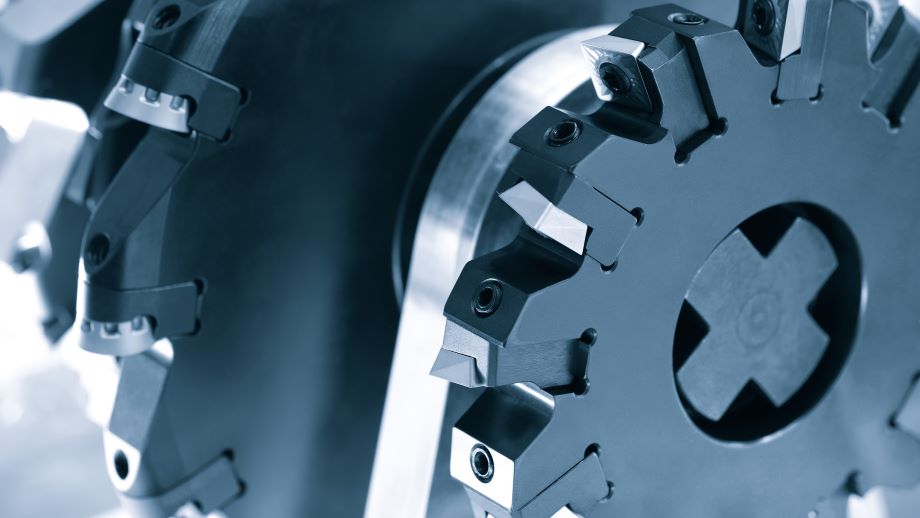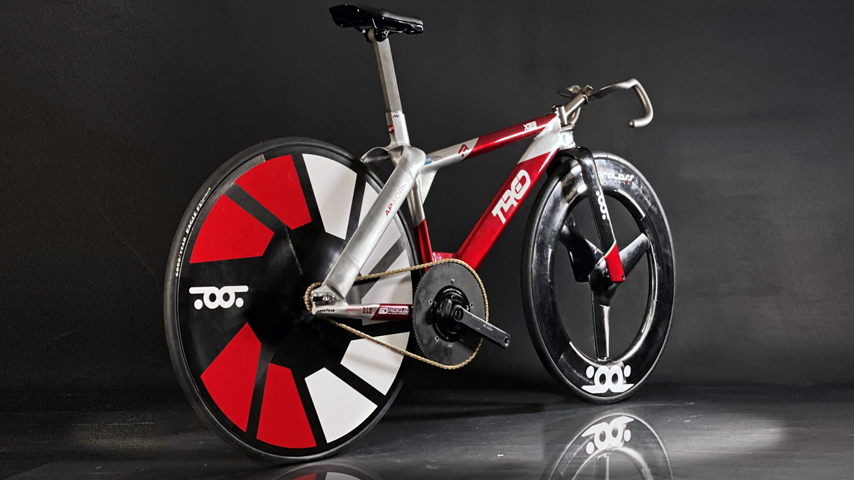Beyond the Sticking Point
Beyond the Sticking Point


It was a clever solution to a modern problem. Automotive engineers at Toyota realized that their new electronic accelerator pedals didn’t provide the kind of tactile feedback that old mechanical pedals did. That missing tactile response made it hard for drivers to maintain the pedal position. So accelerator pedals for Toyota cars at the end of the last decade were designed with a plastic friction device to simulate the mechanical response of older pedals. Problem solved.
Except that the engineers hadn’t properly modeled the friction.
According to a statement released by Toyota in February 2010, “Due to the materials used, wear, and environmental conditions, these surfaces may, over time, begin to stick and release instead of operating smoothly. In some cases, friction could increase to a point that the pedal is slow to return to the idle position or, in rare cases, the pedal sticks, leaving the throttle partially open.” In extreme cases, the accelerator pedal became stuck in a position even after the driver removed his foot, causing uncontrolled acceleration.
The accelerator issue was implicated in multiple accidents, and according to the (possibly exaggerated) claims of some attorneys, the acceleration resulted in 16 deaths and 243 injuries.
A total of 7.5 million vehicles were recalled due to the mechanical sticking of the accelerator pedal. The recall resulted in a loss of about $4.4 billion for the company. While several factors contributed to the crisis, the miscalculation of the potential for friction in the pedal assembly using 3-D simulation software was at least partially responsible.
Sliding friction is a fundamental phenomenon which is present virtually everywhere, so mechanical engineers have to deal with friction and lubrication in various aspects of their work. According to some estimates, more than 10 percent of energy consumed in developed countries is spent on overcoming friction, and 1.0 percent to 1.4 percent of gross domestic product could be saved by the proper application of tribology (the study of friction and wear between solid surfaces in relative motion).
Despite the importance of the sliding friction, our approaches to this phenomenon often remain outdated and rely on centuries-old concepts. New friction theories can help engineers not only avoid costly blunders like the one that affected the Toyota braking system but also come up with elegant new solutions to longstanding challenges.
Sliding friction – the force that resists
The relative motion of two moving bodies in contact with one another – is a fundamental consideration for almost every engineered product. To calculate it, engineers generally turn to the classical Amontons-Coulomb laws of sliding friction. These laws state that the friction force is proportional to the applied normal load and independent of both the apparent or nominal area of contact and the sliding velocity. To calculate the friction force, then, one needs only find the normal load force (that is, the load that is perpendicular to the surface) and multiply it by the coefficient of friction, µ, between the two surfaces, which is found experimentally.
Handbooks for engineers often include values of the coefficient of friction for various pairs of materials in contact. However, these handbooks and tables typically warn that extreme care is needed in using COF data, since the reference data is approximate and the values often span wide ranges. For example, various references provide the COF values for steel on steel between 0.15 and 0.78 for static friction and between 0.1 and 0.42 for sliding friction.
To illustrate the challenge inherent in using experimentally derived coefficients, a recent study sent identical steel and the aluminum oxide samples to various labs around the world to determine their coefficient of friction. The surfaces of samples had the same roughness parameters; the ambient conditions of every test was similar; the load applied on samples (pressures) and sliding speed were the same. The measured values the labs reported µ ranging between 0.4 and 0.9. Such a huge margin of error indicates that COF may be neither a convenient nor an adequate parameter to characterize friction.
While the Amontons-Coulomb laws are the foundation of tribology, these laws are not considered fundamental laws of nature, but rather approximate empirical rules. Friction is perceived as a collective name for various unrelated effects of a different nature and diverse mechanisms such as adhesion, fracture, and deformation, lacking any internal unity or universality. In theoretical works in mechanics and physics, the laws of dry friction are usually introduced in an ad hoc manner in addition to the constitutive laws of mechanics, rather than deduced from any general principles.
There are alternative approaches. One, derived from the idea that friction is a kind of rupture, was suggested more than 20 years ago. According to the frictional rupture theory, friction is similar to the fracture mechanics for a crack which propagates under shear loading conditions. The conditions that govern the amount of sliding friction are the strength of the interface between the two surfaces and the shear stress trying to tear the interface apart. Sliding begins at the weakest point of the interface, but due to various minor imperfections in the shape of the samples, their alignment, and loading, the value of the static coefficient of friction corresponding to the onset of sliding can vary significantly.
Only recently has this model been proven experimentally. The group of Jay Fineberg from the Hebrew University in Jerusalem designed experiments with two transparent polymethyl methacrylate blocks, a high-speed camera, and an array of small strain gauges to show that a one-over-square-root singularity (known for crack propagation) is also found during friction—thus demonstrating experimentally that friction is similar to crack propagation during rupture. The experiment showed that the COF strongly depends on various experimental conditions; it is not a materials parameter.
Besides the sensitivity towards the shape of the samples and bulk deformation, the coefficient of friction depends on the duration of contact between the microscale peaks of rough surfaces, called asperities. Even on seemingly smooth surfaces, the real area of contact is a small fraction of the apparent contact area because of microscopic irregularities. When operating conditions change—for example, the sliding velocity increases—the friction force increases at first, and then approaches to a stationary value. This transition process is referred to as the “run-in.”
Models of the so-called dynamic friction often involve internal “state” parameters and dependency of the COF on the “rate” or sliding velocity. Such “rate-and-state” models are empirical. The physical reasoning behind them, however, is that the real area of asperity contact depends on the duration of contact (which is inversely proportional to the sliding velocity) due to viscous effects, creep, and other relaxation processes.
Rate-and-state models are popular in geophysics and seismology for the friction of tectonic plates. However, they are less known among engineers. Instead, in robotics and control engineering, similar but completely phenomenological models of dynamic friction are used with non-constant COF. Better awareness about modern approaches to dynamic friction can be very beneficial for engineers in this area.
Friction is usually thought of as a stabilizing factor, but in the 1990s George G. Adams discovered that for a broad range of material parameters, the motion is dynamically unstable. When two elastic bodies that are slightly dissimilar in terms of their elastic properties are in frictionless contact, an elastic wave can propagate along the interface. This wave is confined to the interfacial area, since its magnitude decreases exponentially with the distance from the interface. If a small constant coefficient of friction is introduced, the amplitude of the wave will not remain constant anymore. Instead, the amplitude will grow with time in an exponential manner, making the sliding unstable. The source of energy for these waves is the work done by the external force applied to overcome friction.
Instabilities of different types emerge when the coefficient of friction decreases with increasing sliding velocity or when friction is coupled with another effect, such as the thermal expansion of the material. The material expansion due to heating results in increasing contact pressures and friction, which yields further heating and material expansion and a positive-feedback instability. The stability or instability of frictional sliding of two bodies can be predicted via a general thermodynamic mathematical criterion.
Several types of vibration patterns can emerge as a result of frictional instabilities. Some of these stick-slip vibrations may be responsible for the “brake squeal” sound and for other instances of friction-induced vibrations. Usually, friction-induced vibrations are undesirable, but they are also used deliberately for sound generation. For instance, many stringed musical instruments, such as violins, take advantage of friction between a bow and string to produce a tone.
Other potential engineering applications of this knowledge include vibration elimination and control as well as actuators and ultrasonic motors, generating interfacial waves using the piezo-effect.
Besides vibration patterns, solid films can form at the frictional interface during sliding, if friction catalyzes a chemical reaction or atomic or ionic transport at the interface. Such reactions occur in a number of situations when a soft phase is present in a hard matrix, including Al-Sn and Cu-Sn-based alloys. These in-situ formed tribofilms can have protective properties and may reduce friction and wear, so it is desirable to find the conditions under which such films would grow.
Some tribologists have hypothesized that in an Al-Al2O3 composite, the stability of the protective tribofilm growth depends on the size of the Al2O3 reinforcement particles, which could explain an abrupt decline of friction and wear in some experiments with decreasing particle size. Understanding these processes provides a tool for design of novel self-lubrication and wear-resistant materials.
Other examples of self-organized processes induced by friction include the formation of protective films at the steel-bronzes interface, martensite surface layers in steel, and carbon reduction during the friction of copper. Proper understanding and control of these processes allows the development of new tribological materials.
;custompagebreak;How can an engineer take into account such processes as the run-in or frictional instabilities? Conventional design tools, such as the computer-aided design or computer-aided engineering software, deal with friction by assuming a constant value of the coefficient of friction. Engineers would be better off defining that parameter themselves in order to capture the dynamic nature of friction.
One example where that would have been advantageous occurred when design engineers for BMW encountered a problem with squeaky brakes on one of the company’s vehicles. It turned out that during the computer design process, engineers instructed the software only to look for in-plane vibration of the brake disk, while the squeal was the result of the out-of-plane friction-induced vibration. A wrong assumption about the nature of frictional effects led to a poor design.
Another example where modern models of friction are beneficial is airplane brake disks typically made of carbon-carbon composites. To stop an airplane within seconds after it touches the runway, a huge amount of energy must be dissipated, with the temperature of the disks rising to about 1,000 °C. Test results show variability of the friction force and therefore, of the time required to stop the aircraft. This variability is attributed to thermo-frictional instabilities, and thus taking into account the instabilities leads to more predictable behavior of the brake mechanism.
Frictional effects are increasingly important with miniaturization. This is because small devices have high surface-to-volume ratios, with surface forces such as friction and adhesion dominating over the volume forces. Relying on the old-fashioned models of friction provides insufficient precision for micron- or submicron-size devices. One product that relies on precision friction modeling is the hard disk drive, where magnetic platters spin at thousands of revolutions per minute and the data encoded on them are read by a “head” that hovers only a few nanometers above the surface. With moving parts in such close proximity, friction and adhesion should be carefully controlled at the magnetic head-disk interface to provide maximum data-recording density.
These examples suggest that proper incorporation of dynamic friction into engineering design models and software can be beneficial for practical engineers.ME
Michael Nosonovsky is a professor of mechanical engineering at the University of Wisconsin, Milwaukee, and an ASME Fellow.
References
- M. Nosonovsky and V. Mortazavi, 2013, Friction-Induced Vibrations and Self-Organization: Mechanics and Non-Equilibrium Thermodynamics of Sliding Contact (CRC Press/Taylor & Francis).
- O. Ben-David and J. Fineberg, 2011, “Static Friction Coefficient Is Not a Material Constant,” Phys. Rev. Lett. 106:254301.
- G. G. Adams, 1995, “Self-Excited Oscillations of Two Elastic Half-Spaces Sliding With a Constant Coefficient of Friction,” ASME J. Appl. Mech., 62, pp. 867– 872.
- M. Nosonovsky and G. Adams, 2004, “Vibration and Stability of Frictional Sliding of Two Elastic Bodies With a Wavy Contact Interface,” ASME J. Appl. Mech. 71:154.
- I. Svetlizky and J. Fineberg, 2014, “Classical shear cracks drive the onset of dry frictional motion,” Nature, 509, pp. 205-208.
Read the latest issue of theMechanical Engineering Magazine.



